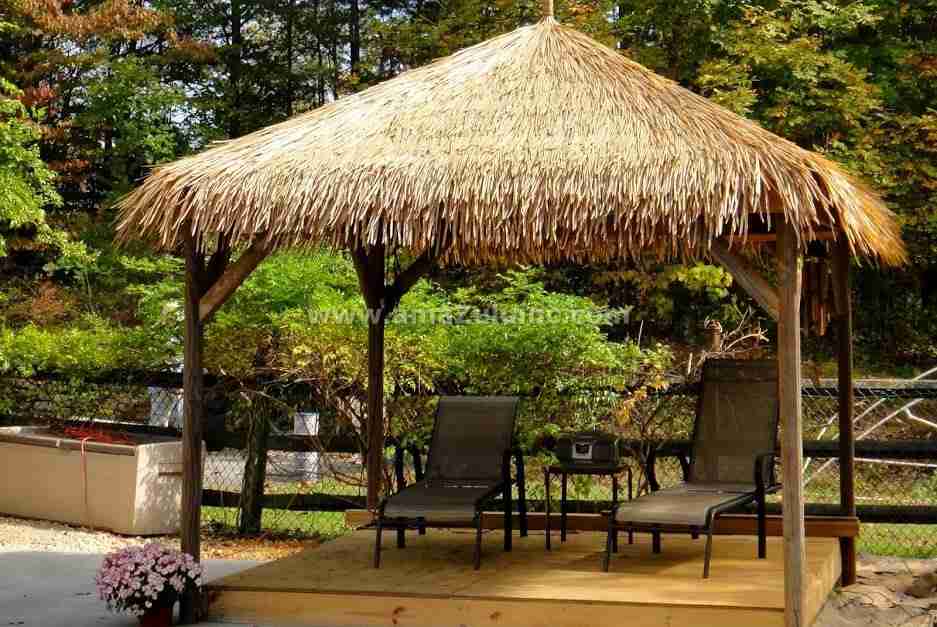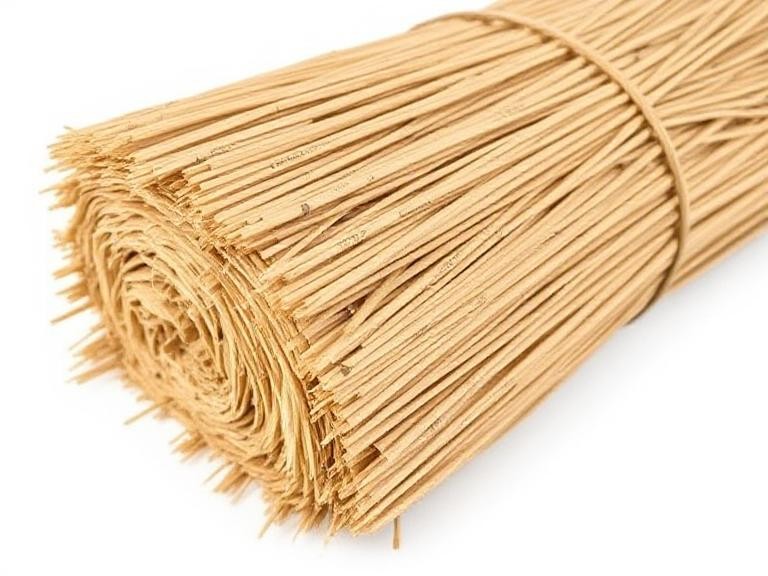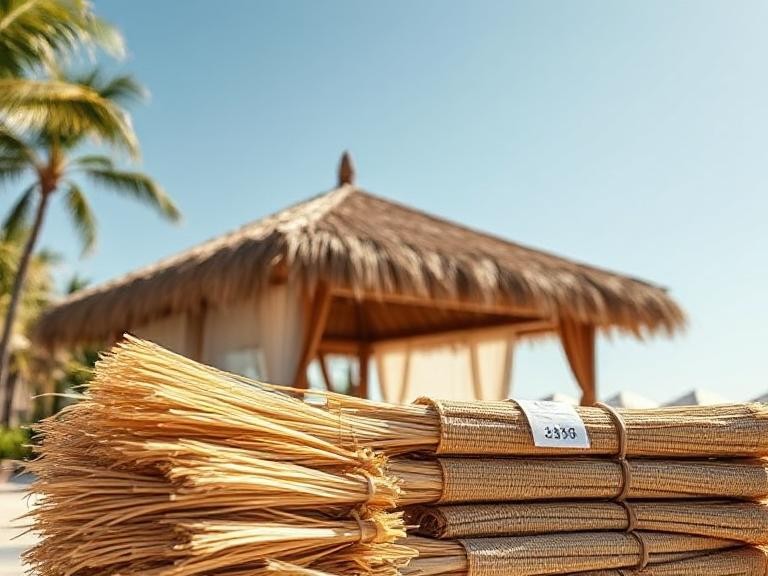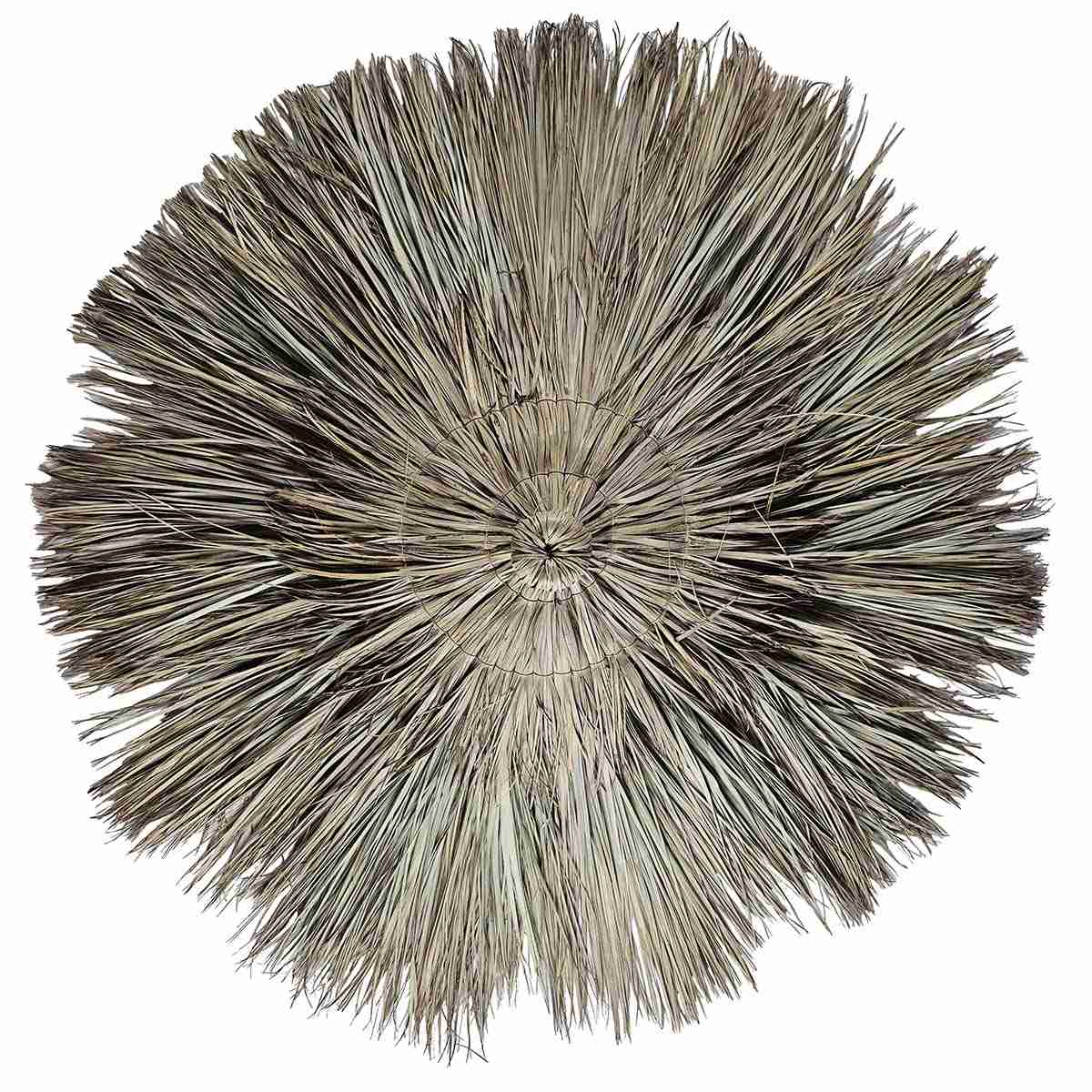
Tristan Ishtar
VP of Sales
Synthetic thatch has a way of transforming an ordinary structure into a welcoming paradise. And its durable and versatile properties make it perfect for handling the worst of the natural elements all year round while keeping that tropical vibe.
This article explores the essence of synthetic thatch roofing, comparing it to its natural counterpart in terms of sustainability, maintenance, and longevity. We’ll also dive into what makes it a great choice for roofing for theme parks and resorts and how to incorporate it into your next project.
What is Synthetic Thatch?
Synthetic thatch is an artificial roofing material designed to replicate natural thatch, offering enhanced durability, low maintenance, and adaptability for various architectural designs. Here’s a few reasons why it has gained prominence in recent years:
- Material Composition: Made from high-grade materials like HDPE (High Density Polyethylene), synthetic thatch mimics the appearance of natural thatch while being much better suited to withstand the elements.
- Visual Appeal: Technological improvements have made synthetic thatch virtually indistinguishable from real thatch.
- Application and Usage: Suitable for various climates and locations, synthetic thatch is a versatile option for roofing in theme parks and resorts.
This evolution in material science not only meets the aesthetic needs but also enhances the functional aspects of roofing.
“They’ve come a long way – it looks just like the real thing,” says Tristan Ishtar, vice president of sales at amaZulu.
Benefits of Synthetic Thatch Roofing
Synthetic thatch roofing offers numerous advantages over natural thatch.
Longevity and Durability
Ishtar says that synthetic thatch roofing is so dependable that the company offers a 20-year guarantee, highlighting its resistance to rot, mold, and mildew. In contract, “natural thatch might last three to five years outside,” he says.
These properties ensure a longer lifespan compared to natural thatch, especially in humid climates like Florida.
Maintenance and Sustainability
Synthetic thatch requires minimal maintenance, retaining its appearance and integrity over time. Its wind resistance (up to 110 miles per hour) makes it a robust option for areas prone to storms and hurricanes.
Fire Resistance
In contrast to natural thatch, synthetic variants can be treated to achieve Class A fire ratings, a critical consideration in commercial settings. This fire retardancy enhances safety, making synthetic thatch a preferred choice in public and commercial buildings.
Comparing Natural to Synthetic Thatch Roofing
When it comes to choosing between synthetic and natural thatch, several factors come into play:
- Lifespan and Durability: Synthetic thatch far outlasts natural thatch, especially in humid or storm-prone environments. As Ishtar points out, natural thatch in such areas can decay rapidly, leading to frequent replacements.
- Maintenance Needs: The natural decomposition process inherent in natural thatch leads to higher maintenance, attracting insects and undergoing faster degradation. Synthetic thatch, on the other hand, remains consistent in appearance and condition over the years.
- Cost Considerations: While synthetic thatch may initially be more expensive – up to eight times higher than natural thatch, Ishtar notes – its longevity and reduced maintenance costs can make it more cost-effective in the long run.
Choosing between synthetic and natural thatch depends on factors such as climate, maintenance capacity, and budget.
“If you’re in parts of Arizona or Texas where it’s crazy dry, your natural thatch may last you 15-20 years because you don’t really have humidity – you don’t have anything that’s going to decay,” Ishtar says. “If you’re in Florida, however, that’s a different story.”
Embrace Innovation with Synthetic Thatch
The development of synthetic thatch roofing has revolutionized the construction of theme parks and resorts. Offering an impressive blend of longevity, maintenance ease, and safety, it stands as a viable alternative to natural thatch.
For architects and resort planners, synthetic thatch offers a world of possibilities. Whether it’s for creating an exotic resort atmosphere or adding a rustic charm to a theme park, synthetic thatch could be the solution you’re looking for.
Contact the experts at amaZulu, where we can learn about your project’s needs and make recommendations.

Tristan Ishtar
VP of Sales
With over 11 years at amaZulu, Tristan brings deep expertise in tropical building materials and a customer-focused approach. He serves as a trusted consultant for architects and designers, providing expert guidance without high-pressure sales.





